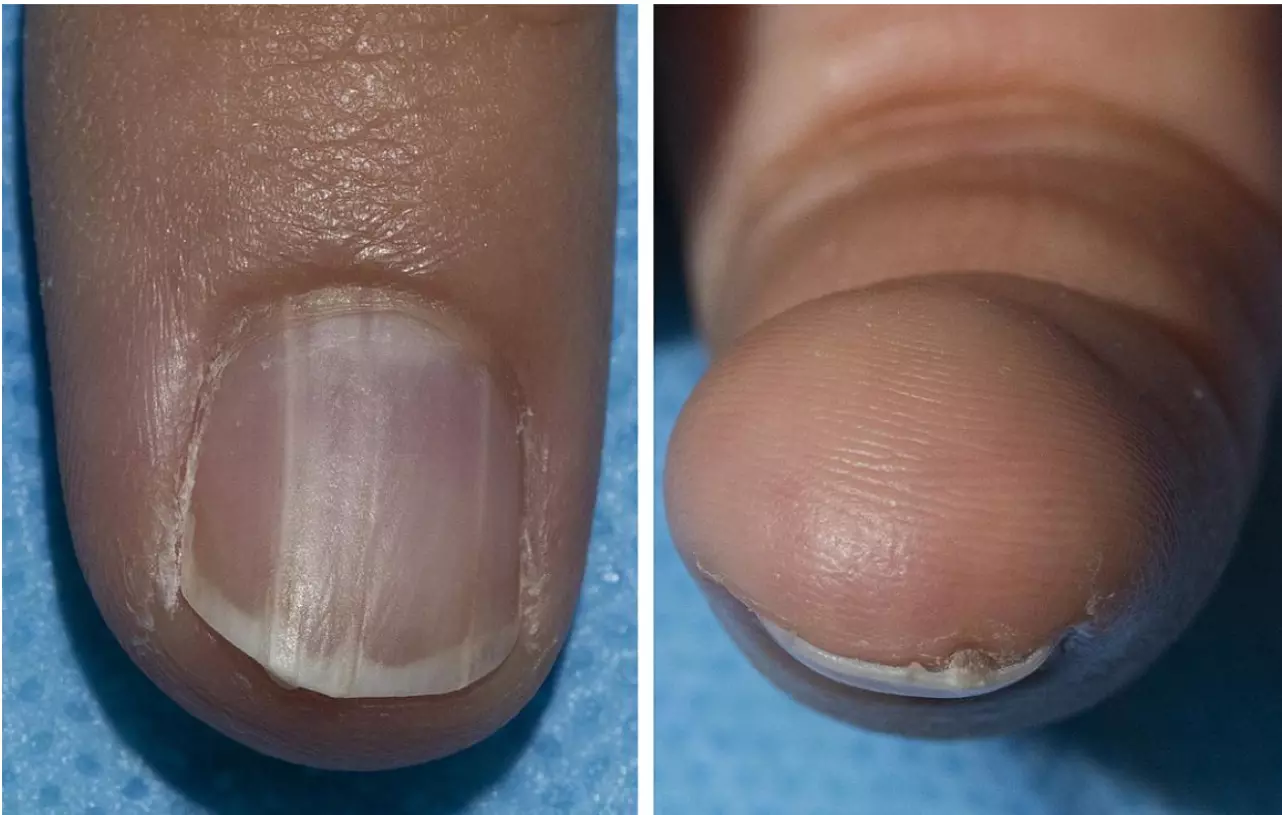How your nail colour can signal cancer risk

New Delhi: A coloured band (usually white or red) along the length of the nail may indicate the risk of developing cancerous tumours of the skin, eyes, and kidneys, finds a study.
Scientists at the US National Institutes of Health (NIH) discovered the presence of a benign nail abnormality known as an onychopapilloma. Besides the coloured band, it also comes with thickening of the nail underlying the colour change, and thickening at the end of the nail.
This may lead to the diagnosis of a rare inherited disorder, known as BAP1 tumour predisposition syndrome, that increases the risk of developing cancerous tumours, they noted.
Mutations in the BAP1 gene drive the syndrome, “which normally acts as a tumour suppressor, among other functions,” revealed the findings published in JAMA Dermatology journal.
Scientists happened upon the discovery while studying participants who were enrolled in a screening for BAP 1 variants at the NIH Clinical Center. As part of the study, a dermatology screening was performed at enrollment and annually for participants aged 2 and older. The cohort in the current study included 47 individuals with BAP1 tumor predisposition syndrome from 35 families.
“When asked about nail health during a baseline genetic assessment, a very astute patient reported that he had noticed subtle changes in his nails,” said co-lead author and genetic counselor Alexandra Lebensohn, M.S., of NIH’s National Cancer Institute (NCI). “His comment prompted us to systematically evaluate other participants for nail changes and uncover this new finding.”
The condition typically only affects one nail. However, in the study of 47 individuals with BAP1 syndrome from 35 families, about 88 per cent presented onychopapilloma tumours in multiple nails.
“This finding is rarely seen in the general population, and we believe the presence of nail changes that suggest onychopapillomas on multiple nails should prompt consideration of a diagnosis of BAP1 tumour predisposition syndrome,” said Edward Cowen, head of Dermatology Consultation Services at NIH’s National Institute of Arthritis and Musculoskeletal and Skin Diseases (NIAMS).
The team suggested that nail screening may be particularly valuable in a patient with a personal or family history of melanoma or other potential BAP1-associated malignancy.


